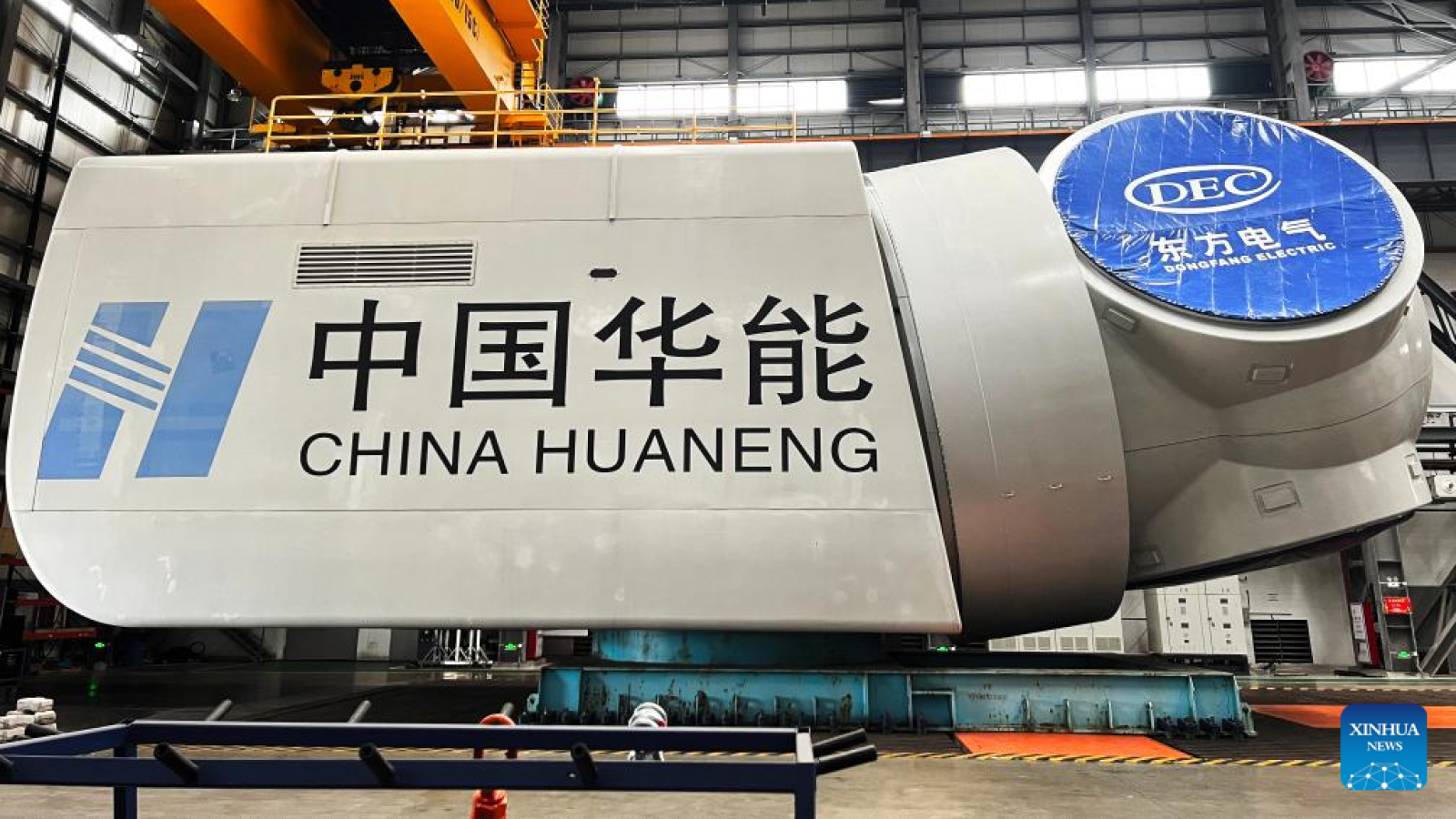Chinese engineers have created a prototype floating wind turbine that they say has broken power generation records — potentially ushering in a new generation of renewable power generation.
The turbine is the result of research by Chinese energy giant China Huaneng Group and power generator Dongfang Electric Corporation, both of which are state-owned enterprises.
Each turbine would be capable of generating 17 megawatts (MW) of clean electricity, or 68 million kilowatt hours (kWh) over the course of a year. This is enough to power approximately 6,300 US households per US Energy Administration data.
To generate this power, the nacelle — the central component within a wind turbine that contains the actual generator — sits atop a 489-foot-tall (152-meter)tower, with blades that add up to a diameter of 860 feet (262 m).
Each “sweep,” or 360-degree rotation, of the blades encompasses an area of 53,000 square meters, or almost eight soccer fields’ worth.
Increasing the amount of electricity a single turbine can generate is important in encouraging greater adoption of wind power, as it reduces the overall number of turbines that have to be installed in each wind farm. This drives down the cost and reduces the time before turbines begin generating power.
Of course, the further out to sea turbines are, the more extreme wind conditions they may be forced to withstand. China Huaneng Group has stated that the test turbine can endure waves in excess of 78 feet (24 m) high, as well as typhoon-speed winds – those in excess of 64 knots (73 miles per hour).
The manufacturers will test the turbine off the coast of Yangjiang, China, in the coming months.
Floating wind expands the playing field
Although offshore wind farms are more expensive to build and produce more expensive energy per unit than their onshore counterparts, putting wind turbines out at sea exposes them to more constant and intense winds — all the better for massive energy production with less downtime.
Most offshore wind turbines are “fixed bottom” devices, meaning they are moored to the ocean floor. This is a cost-effective way to set up wind farms in shallow waters — such as the North Sea, which has an average depth of just 295 feet ( 90 m).
Current fixed offshore wind turbines like the GE Vernova Haliade-X turbines used in the UK’s Dogger Bank Wind Farm are rated at 13 MW, while Dongfang Electric publicly tested a 26 MW fixed bottom turbine in June 2025. The highest-rated turbines in U.S. waters are 12 MW Siemens Gamesa 11.0-200 DD, which are part of the South Fork Wind Farm and produce 11 MW each.
But much of the world’s oceans are unsuitable for fixed bottom turbines, with a global average depth of 3,682 m (12,080 feet), according to the National Oceanic and Atmospheric Administration (NOAA). The deepest offshore wind turbine foundation was installed as part of SSE’s Seagreen Wind Farm, in 58.6 m waters off the coast of Scotland.
But this is exceptionally deep for offshore wind, with the Energy Sector Management Assistance Program (ESMAP) rating all waters deeper than 50 m as unsuitable for fixed bottom turbines.
Meanwhile, the Global Wind Energy Council (GWEC) has estimated that 80% of the world’s offshore wind generation potential is in water deeper than 195 feet (60 m), too deep for fixed bottom turbines.
As the use of floating wind turbines expands, energy companies and nation states could massively increase the amount of energy produced from wind by putting turbines in deeper waters.
For example, countries like Japan, which has been unable to use much of its deep territorial waters for wind power, could use floating turbines as a source of renewable energy. Japan has set an ambitious target to achieve 30-45 GW of wind energy production by 2040, with floating wind turbines expected to play a major role.
